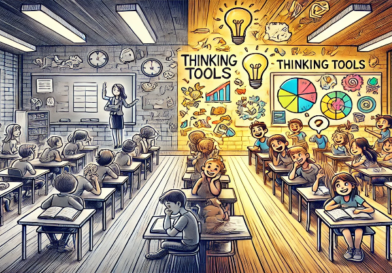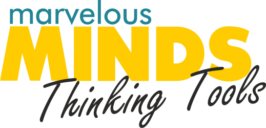Parents play a crucial role in their children’s education. However, choosing the right learning approach can be challenging. Traditional education often emphasizes memorization and passive learning, while the Thinking Tools approach is designed to align with how the brain naturally learns—actively, critically, and creatively.
Here’s a clear comparison of why Thinking Tools should be the go-to choice for modern education.
Traditional Teaching vs. Thinking Tools: A Clear Difference
| Aspect | Traditional Teaching | Thinking Tools Approach |
| Learning Method | Rote memorization and passive reception of information. | Active, multi-dimensional thinking and real-world application. |
| Student Engagement | Students listen, take notes, and recall facts for exams. | Students explore, analyse, and construct their own understanding. |
| Thinking Development | Focuses on knowledge retention rather than deep understanding. | Encourages critical, analytical, and creative thinking. |
| Assessment Style | Standardized tests based on memorization. Water under the bridge. | Formative assessments that track learning progress and thinking development. |
| Real-World Application | Limited; students often struggle to apply knowledge outside the classroom. | High; students develop adaptable thinking skills for real-world situations. |
| Teacher’s Role | Instructor-centered, where teachers deliver information and students absorb it. | Student-centered, where teachers guide students to discover and apply concepts. |
| Collaboration | Minimal peer interaction, individual-based tasks. Limited learning from others. | Encourages discussions, teamwork, and comparative thinking. High level of co-learning. |
Thinking Tools are structured cognitive strategies that guide students through different stages of thinking. Unlike traditional methods that rely on repetition, Thinking Tools help students:
✅ Recognize Patterns and Structures – Instead of learning isolated facts, students see connections between ideas.
✅ Compare and Contrast Ideas – Instead of just memorizing definitions, they analyse similarities and differences using structured thinking processes.
✅ Apply Knowledge Effectively – Thinking Tools bridge the gap between classroom learning and real-world application.
✅ Develop Independence and Confidence – Students learn how to think, not just what to think, making them more self-reliant.
✅ Stay Engaged and Motivated – A structured approach to thinking makes learning enjoyable and meaningful.
Why Parents Should Support Thinking Tools
- 🚀 Prepares children for the future – Thinking Tools develop adaptable skills for careers that require problem-solving, decision-making, and innovation.
- 🧠 Respects how the brain learns – Instead of forcing memorization, Thinking Tools promote natural cognitive development.
- 🎯 Makes learning relevant – Students don't just learn for exams but develop skills for lifelong success.
Parents who want their children to think smarter, not just memorize faster, should advocate for Thinking Tools in their schools.







